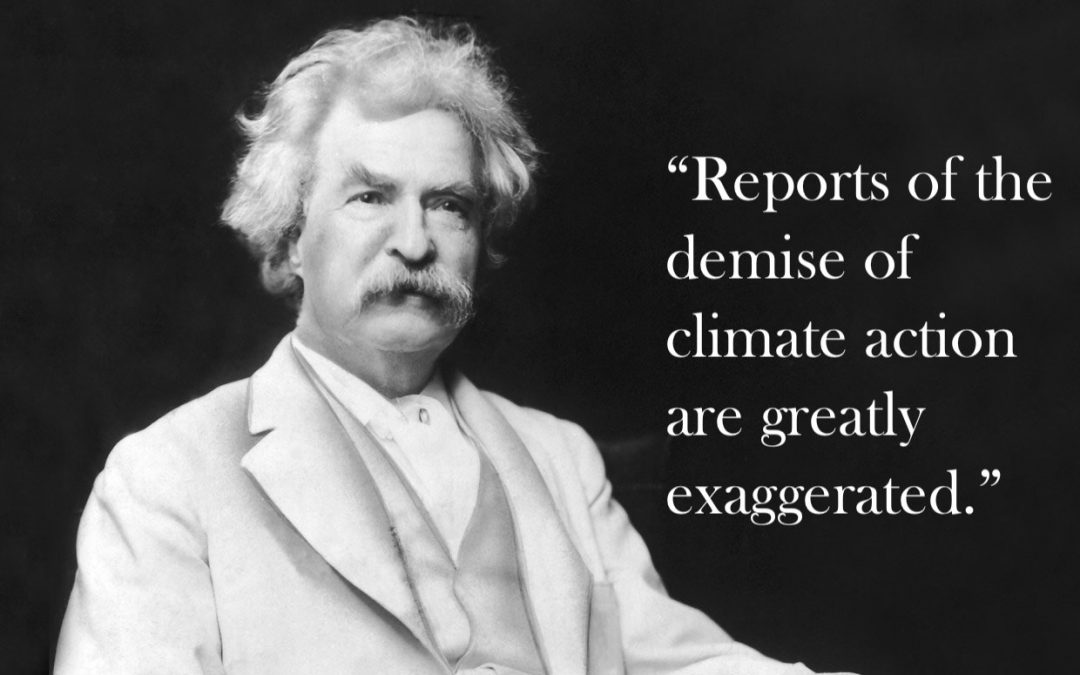I had an aunt who was an astute art collector. One of the pieces that hung on her foyer wall was a crushed Chicago Cubs paper cup from Wrigley Field that had been smashed and mounted on to a piece of wood painted in Cubs blue. It stuck out not only because her tastes tended much more highbrow, but also because it was an excellent metaphor for the hopelessness felt by generations of Chicagoans, bound together in their misery as the Cubs found ways not to win the World Series for 106 years.
I’ve been feeling much the same way about climate change over the last couple of months as the bad news about climate change and our efforts to tackle it continued to pile up. The IPCC report telling us time is running out; the studies showing carbon emissions on the rise again globally; the defeats at the ballot box in Washington, Arizona and Nevada.
Fortunately, after reading a couple of year-end roundups and listening to Greentech Media’s Energy Gang podcast, I realized 2018 wasn’t a Blade Runner-esque reality show. While most of the news was focused on the U.S. federal government exiting international treaties and rolling back environmental rules and regulations, there were some notable steps forward over the last 12 months to provide solace for those hoping for a habitable planet for future generations.
- California is taking the lead on a 100% clean energy standard by 2045. Why is this so critical? Because California as a state is so populous, it can scale clean energy markets by itself on the state level.
- California also passed legislation requiring solar on all new homes and low-rise residential buildings in the state, which could quadruple the amount of solar there. This provision will mandate solar on an estimated 80,000 new homes every year or about 10 percent of the total U.S. market, according to the Census Bureau. Again, because it’s California, the multiplier effect will continue to drive down the cost of solar panels across the country.
- Continuing their climate leadership, California’s Air Resources Board put into effect a rule requiring transit agencies purchase only zero-emission buses starting in 2029, and by 2040, every transit agency in the state must have 100% of its fleet powered by a non-carbon emitting source of energy. Every transit agency across the country will benefit as increased production of electrified transportation leads to lower costs across the board.
- Cargo shipping giant Maersk announced they were going to eliminate all of their carbon emissions by 2050. By itself, Maersk controls 20% of the global cargo shipping volume, and the shipping industry produces as much greenhouse gasses as does the aviation industry. Ships burn bunker fuel (tar), and one ship causes as much pollution as 50 million cars. This decision opens a new market for biofuels.
- Finally, U.S. power providers retired 15.4 GW of coal capacity, representing 44 generation units across 22 power plants, a new one-year record. That’s the equivalent of moving four-and-a-half million homes from coal to renewables and natural gas.
So don’t throw up your hands in defeat or despair. The curve will continue bending towards a cleaner energy future in 2019 and beyond. It might not happen as fast as we want or in the manner in which we’d like to see it happen, but to twist a famous Mark Twain phrase, “The reports of the demise of climate action are greatly exaggerated.”

